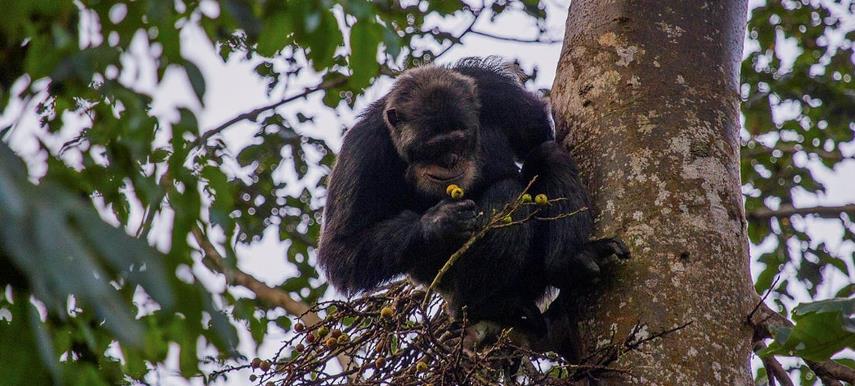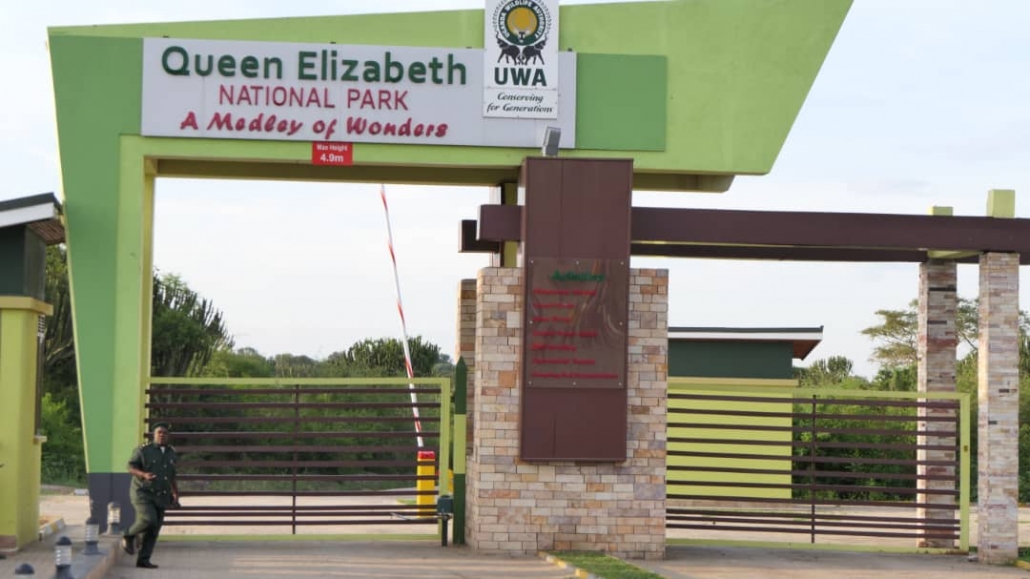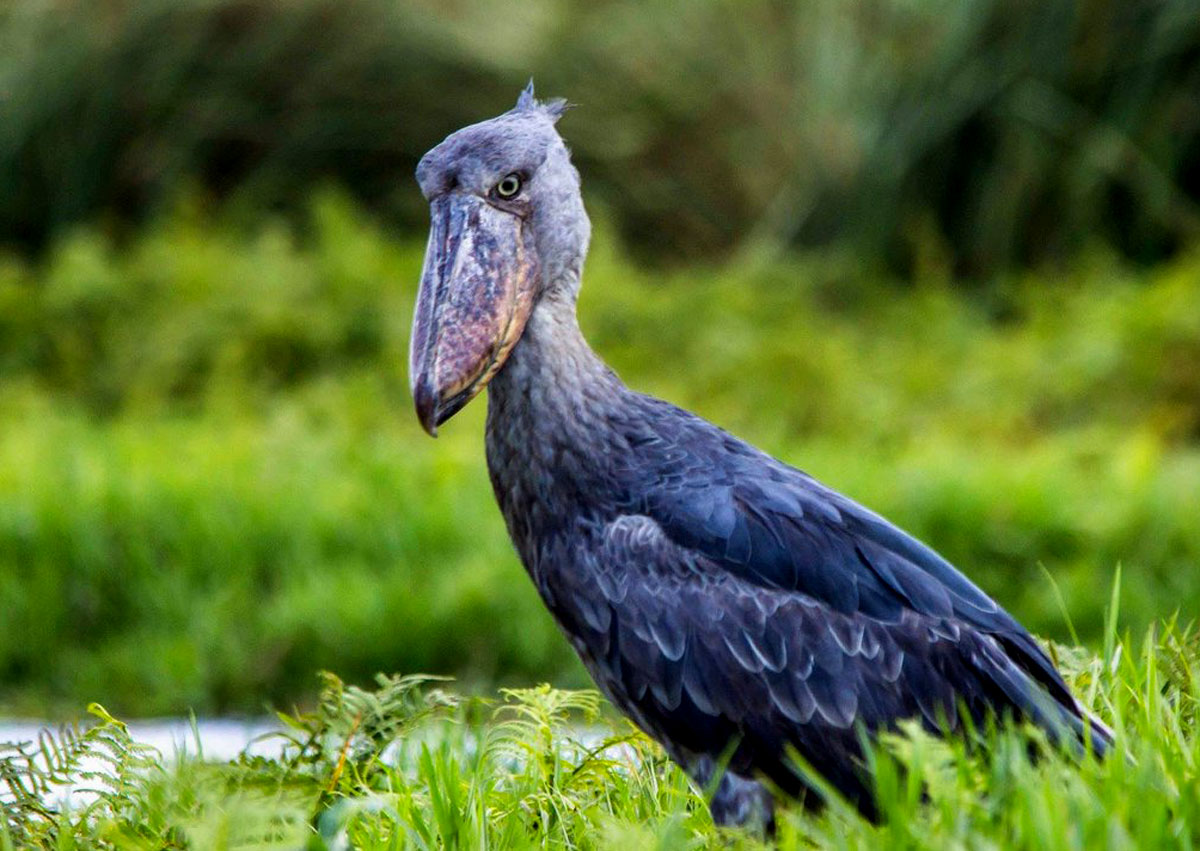
Birding in Uganda
Birding in Uganda.
Birding in Uganda : Uganda is renowned for its wonderful climate, abundant wildlife, and hospitable populace. The majority of travelers on Uganda safaris blend birding with sightseeing and game viewing. Although Uganda isn’t as well-known or developed for bird watching as, say, gorilla tourism, Uganda is still one of the top safari destinations in Africa and among the best in the world for birding trips. In Uganda, more than 1090 bird species have been identified, and over 30 locations have been designated specifically for birdwatching. Millions of enthusiasts for birds flock here each year to see native species such as the Stuhlmann’s Double-collared Sunbird, Fox’s Weaver, and enormous Shoebill Stork. Surprisingly, compared to other countries in the continent, this little landlocked nation boasts more birds per square birdwatching in Uganda. This suggests that without going far or far into the countryside, birdwatchers in Uganda are rewarded with numerous bird sightings. You can actually see them right from the airport in Entebbe, within the capital Kampala, outside your hotel room and as you move around. To truly understand Uganda’s natural bounty, you must visit one of the main birdwatching locations in this stunning country.
There are two reasons for the high bird species density per square km in the nation:
Position within the equator, the Tropics and the Albertine Rift Valley: Areas around the equator are endowed with clean water lakes, rivers, great swamps and rain forests – Uganda is no different. Many different bird species have homes and breeding grounds because to these natural features.
Diversity of Habitats: Uganda boasts a diverse range of habitats for numerous bird species, many of which are native to the nation, including huge lakes and rivers, rain forests, the great East African rift valley, mountains, and semi-arid regions in the northern half of the country. Both local and migratory birds can breed, forage, and congregate in these settings.
Top bird species in Uganda.
The Shoebill stork, African Green Broadbill, Black Bee-eater, Brown-chested Lapwing, African Jacana, Black kites, Green-breasted Pitta, Jahan’s Francolin, Jameson’s Antpecker, Karamoja Apalis, Purcell’s illadopsis, Puvel’s Illadopsis, Nahans francolin, Red-fronted anti-pecker, Rwenzori Turaco, African Harrier Hawk, Cinnamon-chested Bee-eater, Crowned Hornbill, Giant Kingfisher, Goliath Heron, Green Pigeon, Martial Eagle, Mountain Greenbul, Secretary Bird, Shelley’s Crimsonwing, Short-tailed Warbler, African Darter, Grey-Crested Crane, Western Green Tinkerbird, and Yellow-billed Stork are just a few of the other species that can be seen on bird watching safaris.
Important Birding Areas in Uganda.
The most suitable location to spot birds in Uganda is in one of its wonderful national parks and reserves. To maintain an impressive density of bird species, bird sanctuaries are kept relatively intact in these national parks and reserves. Due to Uganda’s astounding diversity of flora and fauna, observing birds while keeping an eye out for other wildlife species is more rewarding.
Budongo Forest.
Budongo Forest: Budongo forest is situated within one of top tourism safari destinations in Uganda – the great Murchison falls national park. In addition to being well-known for chimpanzee trekking, the forest is among Uganda’s top locations for birdwatching. Numerous bird species, including African Dwarf Kingfisher, African Pied Hornbill, Banded Snake-eagle, Black Bishop, Black-bellied Fire finch, Black-capped Apalis, Brown Twin sport, Brown-backed Scrub-robin, Chocolate-backed Kingfisher, Crowned Eagle, Dusky Long-tailed Cuckoo, Fire-crested Alethe, Forest Flycatcher and, Forest Francolin, Green Hylia, Ituri Batis, Lemon-bellied Crombec, Pale-breasted Illadopsis, Red-tailed Ant thrush, Rufous-crowned Eremomela, Slender-billed Green bull, Spotted Green bull, White-thighed Hornbill, Yellow and Grey Long bills, Yellow-billed Barbet, Yellow-browed Camaroptera, Yellow-footed Flycatcher, and Yellow-spotted Barbet, among other species.
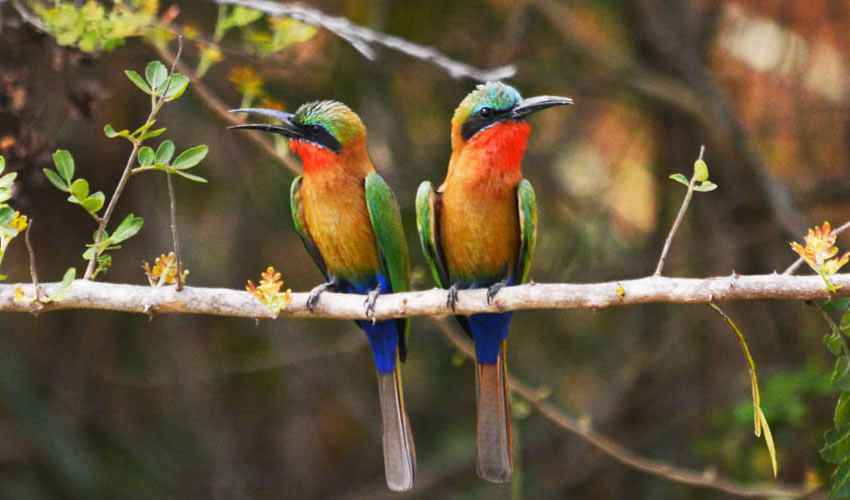
Mabamba Swamp.
In Uganda, Mabamba Swamp is a fantastic location for bird watching with over 300 bird species. Mabamba Bay Wetland swamp is an oasis to the most beautiful and colourful bird species including Black-billed Turaco, Blue-breasted kingfisher, Blue-shouldered Robin-chat, Yellow-throated Greenbul, Yellow-rumped Tinkerbird, Yellow-billed Tinkerbird, Yellow-billed Ducks, Yellow-backed Weaver, Yellow warble, Yellow Wagtail, Yellow-Billed Stork, Yellow-billed duck, Yellow-billed Kite, Woodland Kingfisher, Wood Sandpiper, Winding Cistocola, White-winged Warbler, White-winged Black Terns, White-throated Bee-eater, White-shouldered Tit, White-faced Whistling-duck, White-browed Cuckoo, White-browed Coucal, Whiskered Terns, Whinchat, Weyn’s Weaver, Weaver birds, Water Thicknee, Violet-backed Sterling, Village Weaver, Veilots’ Black Weaver, the Blue Swallow, Tawny-flanked Prinia, Tawny Eagle, Tambourine Dove, Swamp Flycatcher, Stripped Kingfisher, Squacco heron, Spur-winged, Spur-winged Lapwing, Spur-winged Geese, Speckled Mousebird, Slender-billed Weaver, Slender-billed Gull, Shining Blue Kingfisher, Sand Martin, Sand Martin, Saddle-billed Stork, Ruppell’s Long-tailed Sterling.
Bigodi wetland sanctuary.
Even the most experienced birdwatcher will be impressed by the birding in Bigodi Wetland. It is hard to put into words the tremendous diversity and density of birdlife. Because there are fewer predators, the majority of birds view the marsh as the ideal haven and breeding habitat. Because the Bigodi Wetlands reserve attracts frogs and insects that the birds love, it’s also a perfect place for them to feed. The primary species found in the sanctuary are the following: Crowned eagle, Dusky crimsonwing, Abyssinian ground thrush, African pitta, Black bee-eater, Black-capped apalis, Black-eared ground thrush, Blue-breasted kingfisher, Brown-chested alethe, collared apalis, Purple-breasted sunbird, Yellow-rumped tinker bird, and Yellow-breasted sunbird.
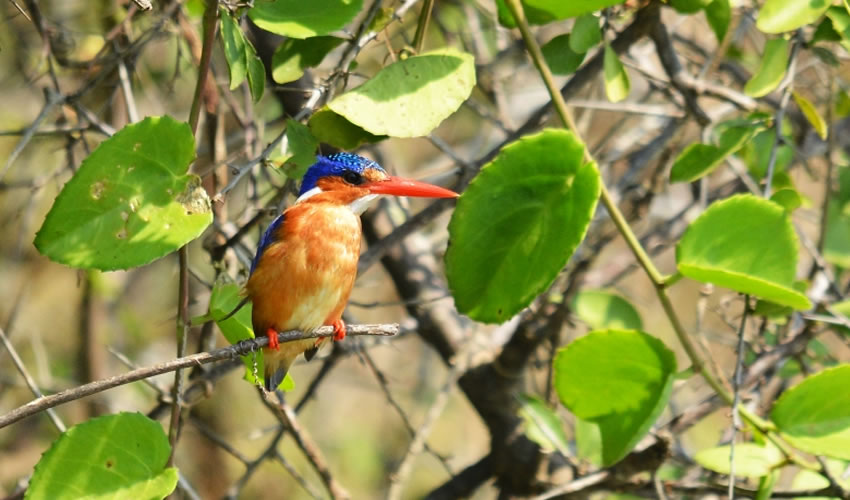
Murchison Falls National Park.
The largest national park in Uganda, Murchison Falls National Park gets its name from the magnificent Murchison Falls, which is one of the most breathtaking waterfalls in the world. The falls force massive amounts of River Nile water to flow through a narrow gorge that is only 7 metres wide before plummeting roughly 45 metres downstream. The ideal times to watch the over 451 bird species that have been identified in Murchison Falls National Park are either on a boat ride to the bottom of the falls or on a wildlife game drive across the park. Shoebill stork, Goliath Heron, Swamp Flycatcher, Abyssinian Ground Horn Bill, Red-throated Bee Eater, Northern Red Bishop, African Quail Finch, and Giant Kingfishers are just a few of the numerous bird species found at Murchison Falls National Park. Highlighting a wildlife safari in Uganda with bird watching at Murchison Falls National Park is highly recommended.

Bwindi Impenetrable National Park.
Because there are so many uncommon bird species in Bwindi Impenetrable National Park, bird watching is a popular pastime despite the popularity of Uganda Gorilla Trekking Safaris. Bwindi is home to about 357 different kinds of birds, including the Handsome Francolin, Fraser’s Eagle, African Green Broadbill, Black-billed Turaco, Collared Apalis, and White-bellied Robin Chat, among many more.
Mgahinga Gorilla National Park.
About 180 different bird species can be found at Mgahinga Gorilla National Park, which is situated in southwest Uganda. Visitors at Mgahinga have the option of bird watching in addition to tracking the Nyakagezi Gorilla Family. Mgahinga Gorilla National Park is home to a variety of bird species, including the Cape Robin, White-starred Robin, Brown Woodland Warbler, Cinnamon Bracken Warbler, Rwenzori Batis, Greater Double-collared Sunbirds, and Archer’s Robin Chat and many others.
Kibale Forest National Park.
Kibale Forest National Park is one of the best safari destinations in Uganda to go bird watching, home to over 375 different species of birds. Due to the high vegetation that supports avian life, bird watching safari is also popular in addition to chimpanzee tracking safaris. Kibale Forest National Park is home to a wide variety of bird species, including Black Bee-eater, Dusky-blue Flycatcher, Grey-throated Flycatcher, Purple-breasted Sunbird, Blue-breasted Kingfisher, Crowned Eagle, Little Greenbul, and White-naped Pigeon. In addition to being a primate sanctuary, Kibale Forest is ranked among Uganda’s Top 10 Birding Locations.
Queen Elizabeth National Park.
Queen Elizabeth National Park is one Uganda’s most visited National Parks and is home vast animal and bird species. Queen Elizabeth National Park is one of the best destinations for birdwatchers to see even the rarest bird species, with over 600 kinds of birds. On a boat tour along Kazinga Channel or during a wildlife game drive through the park, you can see the of these bird species. Swamp Flycatcher, African Skimmer, Yellow bellied stock, African Jacana, Cattle egret, Raptors, Malachite and Pied Kingfishers, Grey-headed Kingfisher, Black-headed Gonolek, Verreaux’s Eagle-owl, Sedge Warbler, White-winged Terns, Grey-capped Warbler, Collared Pratincole, Martial Eagle, Gabon, and Slender-tailed Nightjars are a few of the bird species found in Queen Elizabeth National Park.
Lake Mburo National Park.
Lake Mburo National Park is one the 10 Best Birding Spots in Uganda. Lake Mburo National Park is a home to approximately 351 different bird species in addition to an abundance of zebras. The park is the only one in Uganda where visitors can go on horseback safaris and see some of the country’s bird species while doing so. Numerous bird species may be seen in Lake Mburo National Park, such as the Nubian Woodpecker, African Fish Eagle, Red-necked Spurfowl, Cheeky Bronze-tailed Starling, Bee-eaters, Cheeky Bronze-tailed Starling, Crested Francolin, Brown Parrot, and Emerald-spotted Wood Dove.
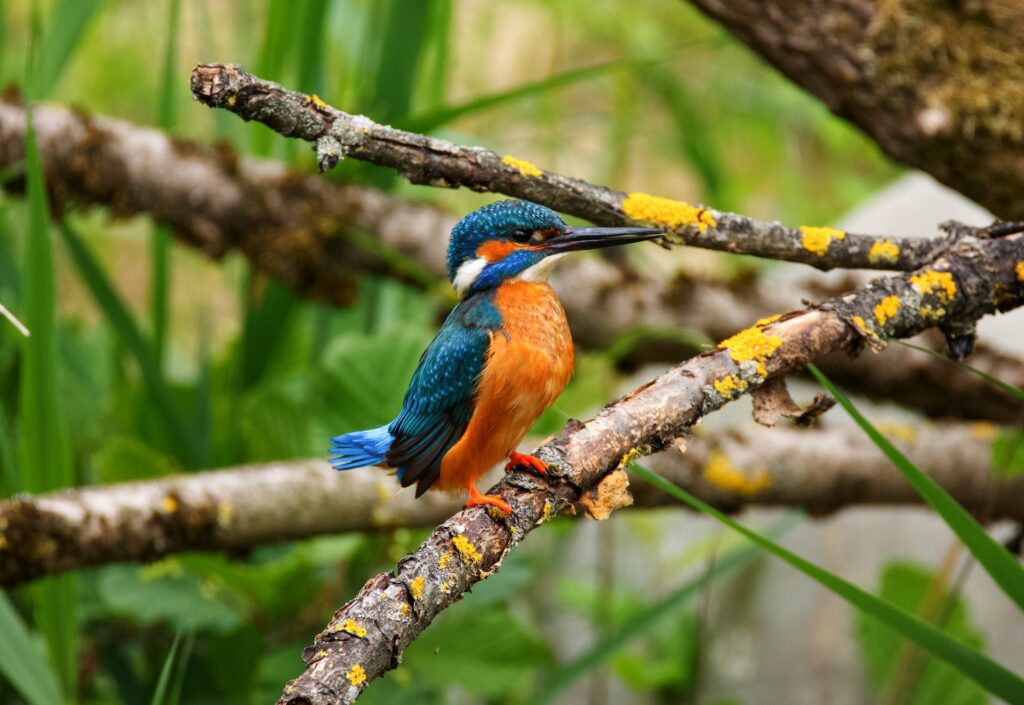
Semuliki National Park.
Semuliki National Park, one of Uganda’s top ten birdwatching locations, is situated in the Albertine Rift Valley in Western Uganda. The riverine forest of Semuliki is home to approximately 441 different species of birds, including Purple-breasted Sunbird, Yellow-throated Nicator, Black Dwarf Hornbill, Nkulengu Rail, Piping Hornbill, Yellow-throated Cuckoo, Dwarf Honeyguide, Great Blue Turaco, and Maxwell’s Black Weaver. The Semuliki National Park is home to the well-known Sempaya Hot springs.
Rwenzori Mountains National Park.
Over 217 different bird species can be seen in Rwenzori Mountains National Park, which is located in Western Uganda. The majority of these species can be seen when hiking in the mountain. Rwenzori Turaco, Blue-headed, Golden-winged, White-starred, Long-eared Owl, Archers’ Robin-chat, Lagden’s Bush Shrike, Slender-billed Starling, and others are among the bird species found in the Rwenzori Mountains National Park.
Kidepo valley national park.
Kidepo valley national park is one of Africa’s most exquisite National Parks. It comprises open savannah grassland, woodland, montane vegetation, and palm trees. The jewel is situated near Uganda’s northeastern border with South Sudan and Kenya. More than 475 bird species can be found at Kidepo, 100 of which are found in northern Kenya and Uganda, its second-highest concentration of bird species known as a resulte else in Uganda can be found in the Park. Rose-ringed Parakeet, Karamoja Apalis, and Clapperton’s Francolin, Dark Chanting Goshawk, Red and Yellow Barbet, Ostriches, Little Bee-eater, and Kori Bustard are examples of common species. Additional species include Jackson’s Hornbill, Rufous Chatterer, Purple Grenadier, Black-breasted Barbet, Pygmy Falcon, Abyssinian Roller, Chestnut Weaver, Scarlet-chested Sunbird, Fox Kestrel, Golden Pitit, and Jackson’s Hornbill and among many others.
Bird watching safari in Kidepo is best enjoyed at Apoka Camp. This location provides amazing birdwatching opportunities. The boundaries of the Namamukweny and Narus valleys are some other locations.
Entebbe Botanical Gardens.
Entebbe Botanical Gardens is a well-liked location for leisurely nature walks to take in the lush foliage and watch birds and monkeys. Most visitors come here to unwind beneath the shade of the trees. But the Botanical Gardens are one of Uganda’s most well-known birding locations, and birders frequently visit them together. The gardens were created back in 1,901 years. They encompass a verdant area of forest with large trees, extending beyond the borders of Lake Victoria. The Entebbe Botanical Gardens have an excellent combination of open area, aquatic, and woodland species, making it an excellent place to see birds. The following are just a few of the birds that can be seen here: Hamerkop, African Open-billed Stork, Saddle billed Stork, Marabou Stork, Egyptian Goose, Yellow-billed Duck, Black Kite, Black-crowned Night Heron, Cattle Egret, Little Egret, Black-headed Heron, and Pink-backed Pelican.
Mabira forest
Mabira Forest was formerly Uganda’s largest rainforest, but it is currently covered by an area of about 306 square kilometres due to deforestation brought on by commercial interests. Mabira Forest is home to over 315different species of birds, making it an excellent birdwatching location and popular tourist destination. Mabira Forest Reserve is easily reachable from Kampala and other Ugandan towns, situated 56km along the Kampala-Jinja route in the Buikwe district.
Make reservations for a day trip to Mabira Forest to go bird watching on a Uganda Safaris. This birdwatching journey starts when you are picked up from your hotel in Kampala or Entebbe. Depending on traffic, the travel to Jinja from Kampala takes two to three hours. As soon as you get at the forest, go to the offices where you will receive an orientation and be paired with a guide who will assist you in finding and identifying the many birds while you stroll around the forest. The Long-crested Eagle, Red-chested Sunbird, Open-billed Stork, White-threatened Bee-eater, Cattle Egret, Marabou Stork, Pied Crow, Black Kite, Lizard Buzzard, Black-headed Weaver, African Thrush, Hadada Ibis, Hamerkop, Broad-billed Roller, Palmnut Vulture, Bronze Mannikin, and Great Blue Turaco are just a few of the many birds you can expect to see in a single day. Some instances of different birds include the
Forest Wood Hoopoe, Yellow White-eye, Hairy Breasted Barbet, Black-and-white Mannikin, Chestnut Wattle-eye, Superb Sunbird, African Grey Parrot, Jameson’s Wattle-eye, African Shrike Flycatcher, Red-headed Malimbe, Velvet-mantled Drongo, Black-billed Turaco, Bockages Shrike, Tambourine Dove, Red-bellied Paradise Flycatcher, African Harrier Hawk, Speckled Tinker bird, Great Blue Turaco, and so on.
In addition bird watching in the Mabira forest your day trip can be combined with other activities like the Zip-lining experience and a primate’s walk. Approximately six different kinds of primates are thought to live in the area, including black and white Colobus monkeys, grey-cheeked Mangabey monkeys, and vervet monkeys.
Lake Bunyonyi.
In the southwest of Uganda, halfway between Kabale and Kisoro, sits Lake Bunyonyj. Bunyonyj, which translates to “a place of little birds” from the word “small birds,” is undoubtedly a magical location for bird watching. What’s more, it is surrounded by steep terraced hills and is thought to be the deepest lake in East Africa, reaching a depth of almost 900 metres. More than 200 bird species have been identified at Lake Bunyonyj. These include the African Harrier Hawk, Grey Crowned Crane, White-tailed Blue Monard, Herons, egrets, Slender-billed Baglafetch, Levillant Cuckoo, Cardinal Woodpecker, and many more. There are more than forty small islands in the lake, a few of which include the Punishment Island, Bwana, Kyahugye, Njuyeera, Bucuranuka, and Bushara. Many bird watchers who come to the Lake can appreciate the variety of bird species that may be found on all these Islands. This same lake, which is located near the Rwandan border between the districts of Kisoro and Kabale, is also home to several otters, crayfish, and numerous bird species.
Best Time for birding in Uganda.
Although a birding safari can be undertaken at any time of the year, it is generally unknown when is the best time to go birdwatching or birding in Uganda. However, compared to the other months, which are the rainy seasons, January, March, July, August, and September are said to be the best times to go bird watching in Uganda. When the rains are heavy, there are challenges such as difficulty crossing roads, which causes delays because they are impassable, and it also makes hiking trails slippery, which can limit one’s time for bird watching. Carefully plan your birdwatching safari.

